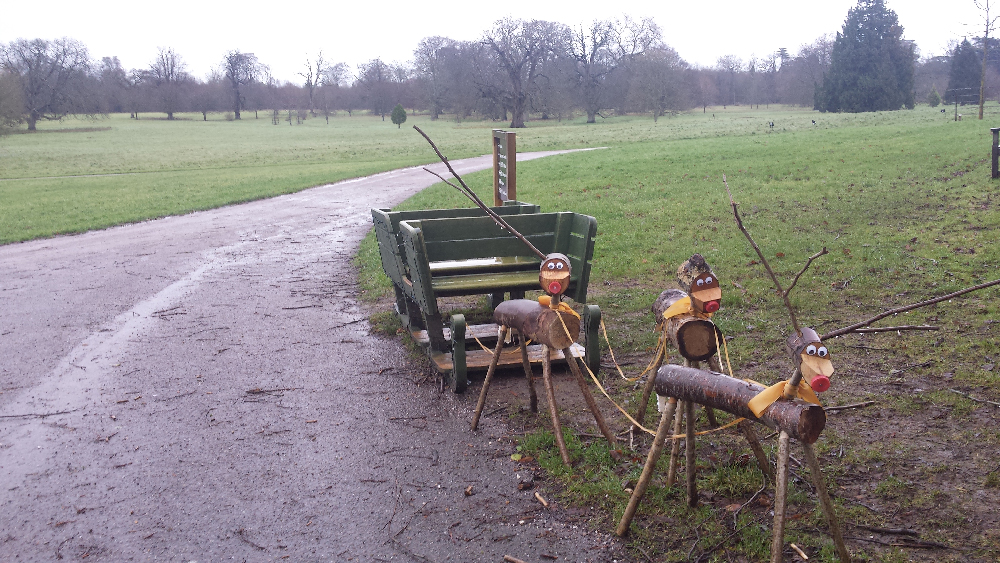
Kingston Lacy is a 17th Century house, surrounded by extensive parkland, in east Dorset, home to the Bankes family for hundreds of years and now managed by the National Trust. At Christmas they opened a few of the rooms, set out for an Edwardian Christmas.
One of the outbuildings is the old laundry. Normally there is a display of old linens and laundry items, but over Christmas it had been turned into a craft activity space and a spot to meet Santa.
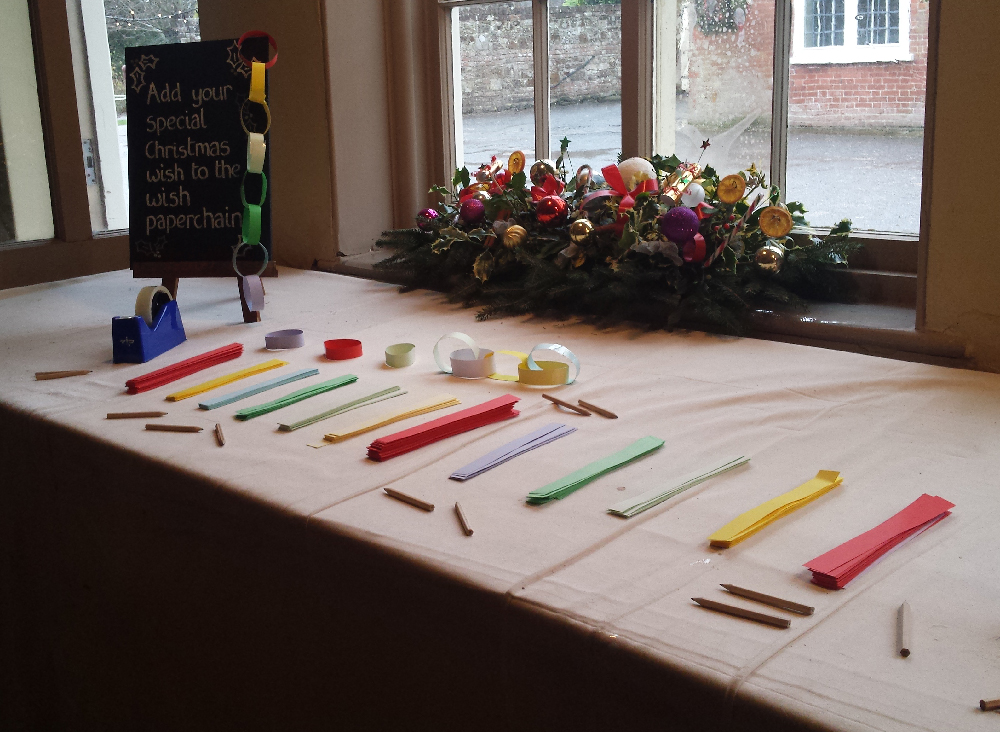
I remember making paper chains just like this when I was a child. Maybe not quite as many!

At the other end of this long room, a cosy corner had been set aside for visits to Santa. He must have been on a tea-break when I visited.


The main house also had a few craft activities going on. In one of the other downstairs servants’ rooms there was an opportunity to make some further traditional decorations, using dried orange slices. You could then hang them on the adjacent Christmas tree. Using my advanced crafting skills I made the one on the right, in the above picture.
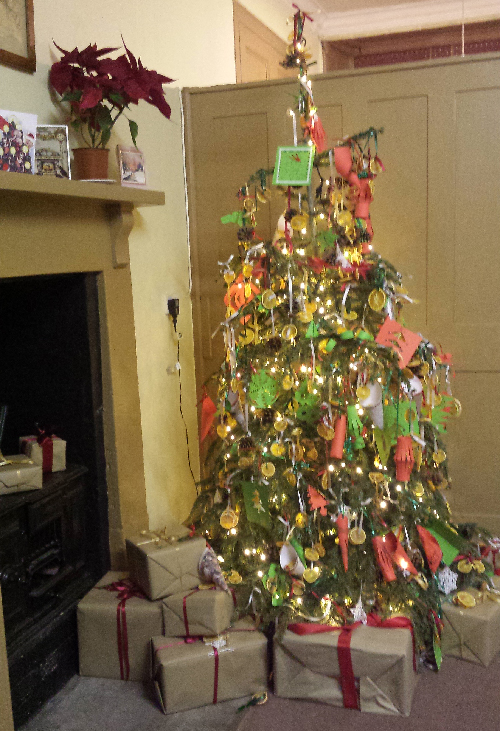
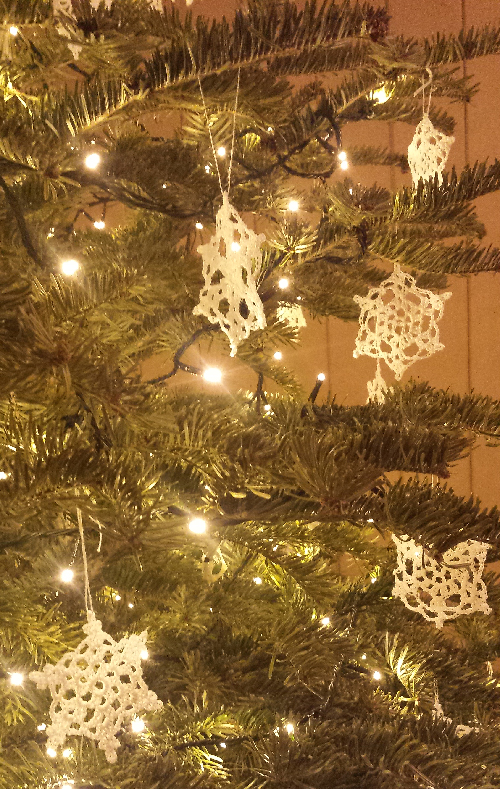
In the summer a larger number of the upstairs rooms are open to the public, but during this Christmas opening, lots of the effort had gone into dressing these rooms in the servants quarters. Almost every room had a real tree. I liked the hand crochet decorations on this small tree. Luckily they did not expect us to make these. I touched one of them to see if they had been starched, but they did not appear to have been. Often small decorations such as these are dipped in starch to give them more substance. Did you know that starch first came to England in the 1560’s? A Dutch lady named Dinghen Van der Plasse helped to popularise it when she moved to London and set up her starching business. This new product allowed ruffs to become more stable and so develop to huge sizes, which is why Elizabethan portraits are full the nobility (both male and female) wearing them.
Kingston Lacy has a fine collection of artworks, including a number of portraits featuring ruffs and lace collars. Unfortunately the curtains were drawn closed in most of the rooms during this visit ( to highlight the Christmas lights) so I was not able to photograph them this time. I did manage to capture a rather fuzzy view of this portrait of King Charles I’s elder children. His son Charles is wearing a rather fetching collar. This is a 17th century copy of a Van Dyke painting, in the Royal Collection. Collars (or bands as they are correctly named) with these pointed edges like this were colloquially called ‘Van Dyke’ collars, as this fashionable court artist produced so many portraits of the nobility wearing this style of collar.
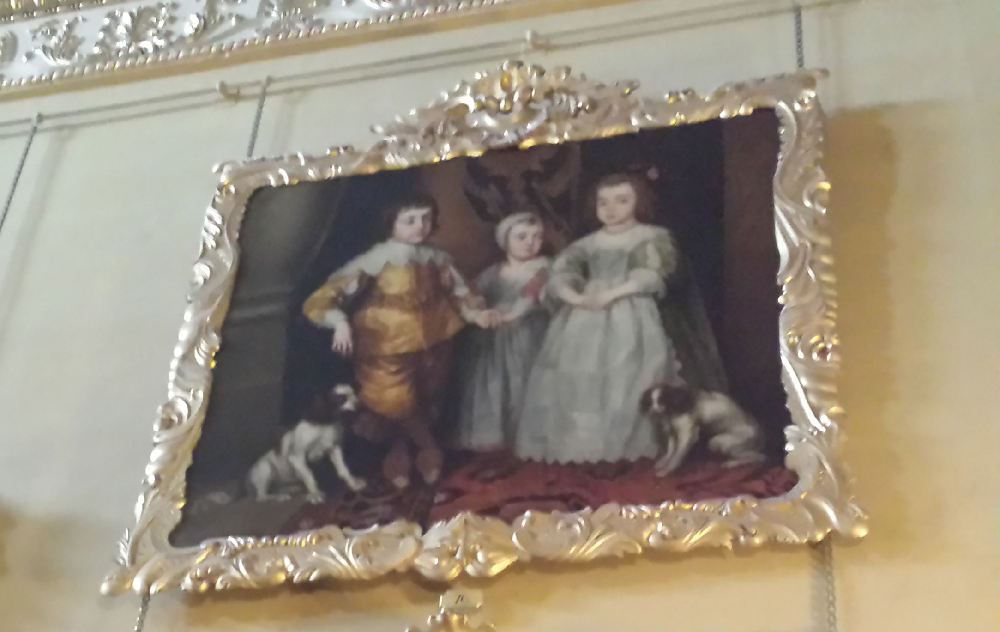
In the main saloon visitors were invited to replicate an Edwardian Christmas by playing popular board games, such as dominoes and draughts, beneath the beautiful tree.
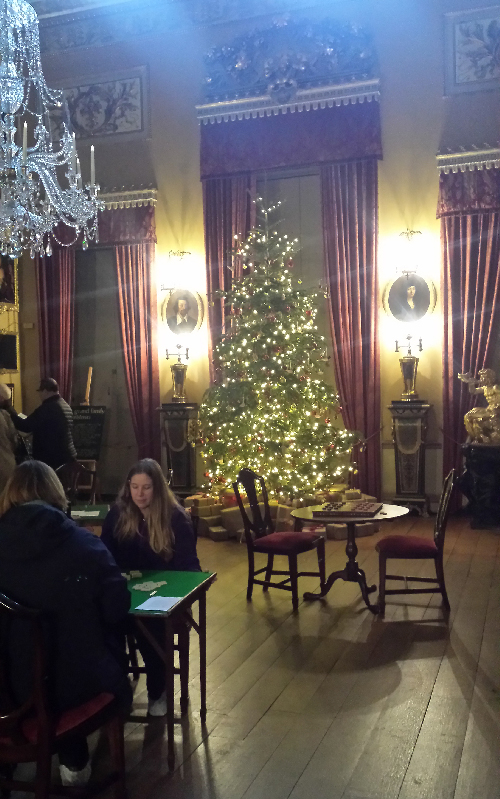
In another corner of the room a small writing desk was set aside for us to write Christmas cards. They had printed facsimiles of some charming old cards for people to use. Daphne, Viola and Ralph were the children of the Bankes family during this Edwardian period.
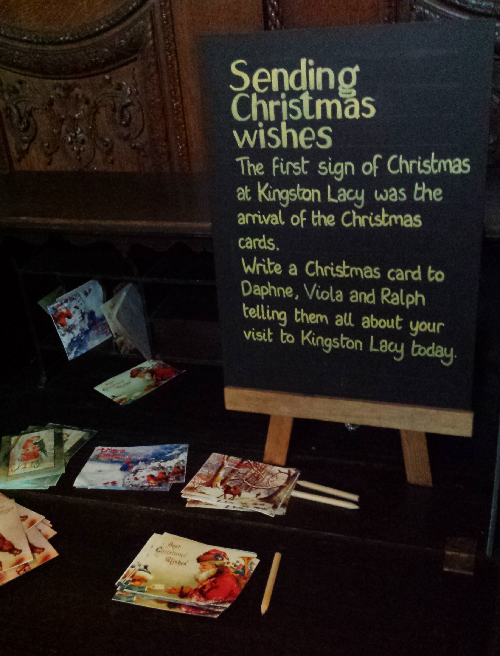
Only a couple of the main upstairs rooms (the saloon and the dining room) were open during this season. The dining room was set for dinner of course.
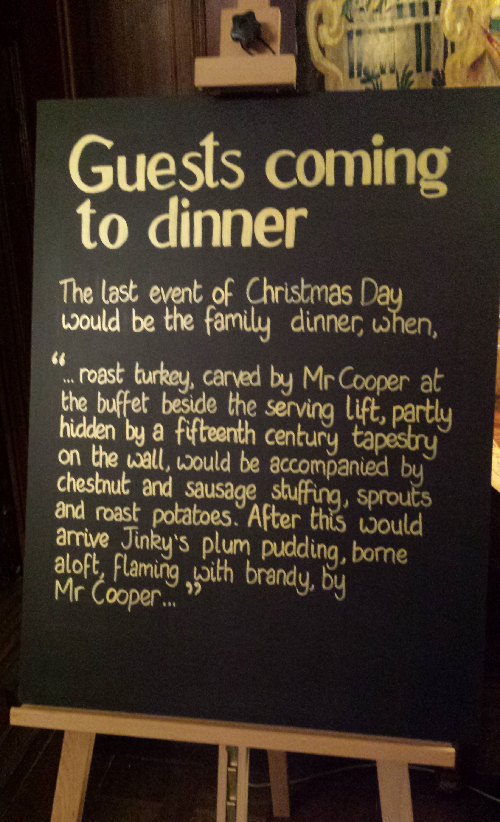
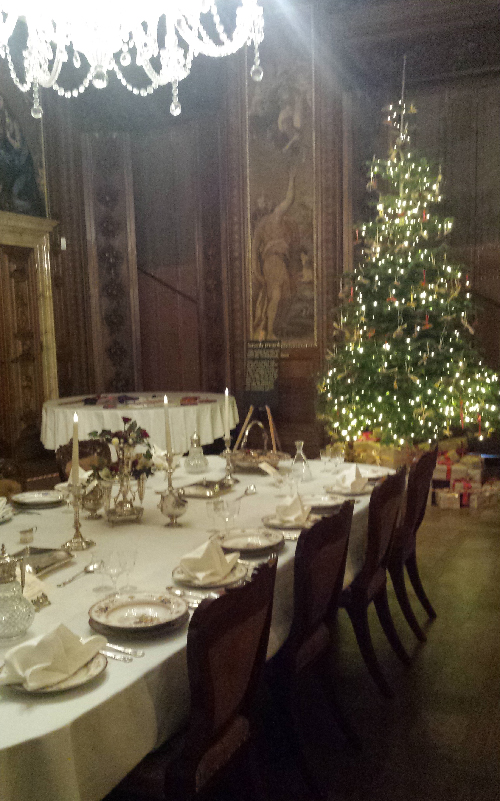
In the corner, a side table was set aside with presents for the servants.
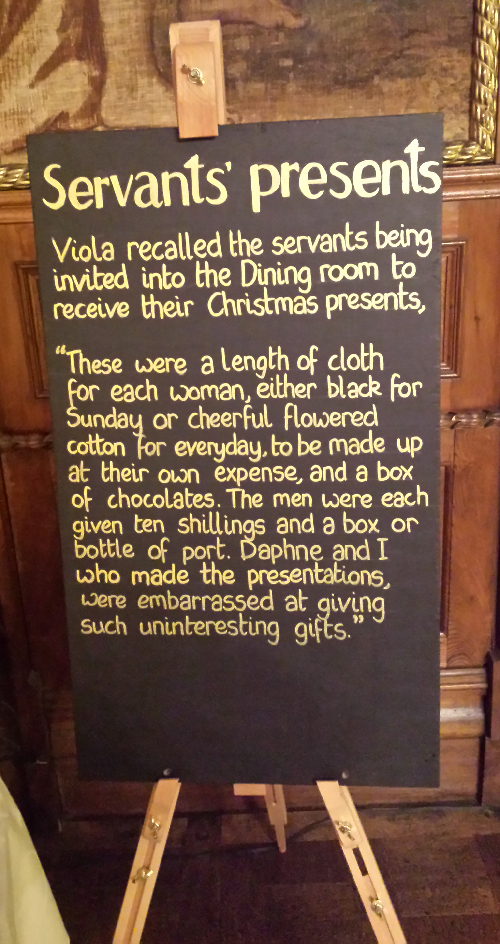

Here you can see some examples of these, mainly practical, presents.
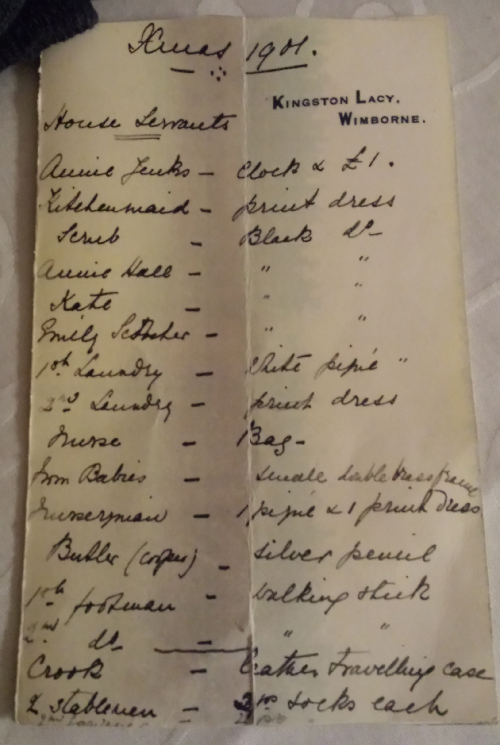
Copies of the present lists were available for us to view. As mentioned in the sign, most of the servants received dress lengths. The stable men got warm socks and the 1st Footman a walking stick. However the Cook received a leather travelling case and the Butler a silver pencil, much nicer gifts, as befitting their station. I expect they also had some a bit of a drink downstairs too. We visitors certainly could have, as staff downstairs were offering thimblefuls of sherry and small pieces of cake as we left. Very warming if you had been out walking in the grounds, as many visitors had.